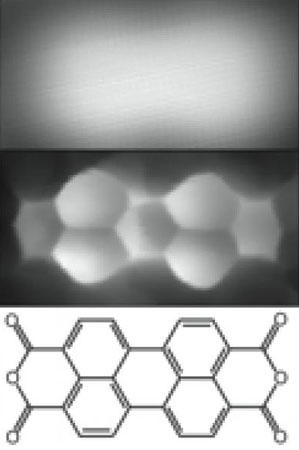 For their look into the nanoworld, researchers used a scanning tunneling microscope. Its thin metal tip scans the specimen surface like the needle of a record player and registers the atomic irregularies and differences of approximately one nanometer with minuscule electric currents.
For their look into the nanoworld, researchers used a scanning tunneling microscope. Its thin metal tip scans the specimen surface like the needle of a record player and registers the atomic irregularies and differences of approximately one nanometer with minuscule electric currents.
Aug 20th, 2010
Read more
Scientists at the Max Planck Institute of Quantum Optics succeed in recording single-atom resolved images of a highly correlated quantum gas.
Aug 20th, 2010
Read more
nfrastructure Technologies is the first company to sign on to the Assembly's inter-regional nanotechnology-partnership initiative. The company will occupy a newly created space at SUNYIT; planning of which is underway.
Aug 19th, 2010
Read more
Leading scientists from neuroscience, nanoscience, astrophysics, computer science and engineering are gathering to discuss this question in Tromso, Norway, continuing a dialogue that began at last year's Kavli Futures Symposium.
Aug 19th, 2010
Read more
A record number of 16 papers with imec authors has been accepted for this year's IEEE International Electron Devices Meeting (IEDM), being held Dec 6 - 8 in San Francisco. Both ITRS-related as well as More-than-Moore-related research papers have been accepted.
Aug 19th, 2010
Read more
National Science Foundation funds $10M expedition in computing.
Aug 19th, 2010
Read more
These workshops brief participants on what is nanotechnology and manufactured nanomaterials, what are some of the potential risks from nanotechnologies and manufactured nanomaterials (e.g. to the environment or human health) and benefits (e.g. decreased costs of low-maintenance products, or use in environmental remediation) of nanotechnology and nanomaterials.
Aug 19th, 2010
Read more
Technology World in partnership with UK NanoForum will bring over 350 senior international delegates together with the best of the UK's Science and Technology community. With a focus on trade, investment and collaborations, this will be a networking forum for industry, academia, technology purchasers and those seeking to develop joint ventures and future partnerships.
Aug 19th, 2010
Read more
An all-day special session on a roadmap for maskless lithography R+D and a keynote presentation offering insights on how to be successful in the photomask industry will highlight the SPIE Photomask Technology symposium next month in Monterey, California.
Aug 19th, 2010
Read more
An international team of researchers has succeeded in producing nanocrystals that build conductive two-dimensional nanostructures trough self-organisation.
Aug 19th, 2010
Read more
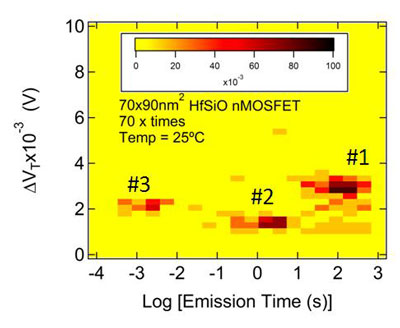 Using a new technique, researchers from imec, TU Vienna, and Infineon have shown that both electron and hole capture and emission times in SiO2 and HfO2 dielectrics are strongly thermally activated. The new technique, Time Dependent Defect Spectroscopy (TDDS), can be used to study the capture and emission times of single oxide defects over a very wide time range.
Using a new technique, researchers from imec, TU Vienna, and Infineon have shown that both electron and hole capture and emission times in SiO2 and HfO2 dielectrics are strongly thermally activated. The new technique, Time Dependent Defect Spectroscopy (TDDS), can be used to study the capture and emission times of single oxide defects over a very wide time range.
Aug 19th, 2010
Read more
Imec and KLA Tencor have established a metrology method for optimizing the etch rate uniformity (ERU) in a transformer coupled plasma (TCP) reactor. The proposed metrology method makes use of PVx2 sensor wafers. For ion-assisted etch processes, the use of this PVx2-based method for ERU tuning results in lot-turn time savings of up to 80% compared to conventional etch rate uniformity tests.
Aug 19th, 2010
Read more
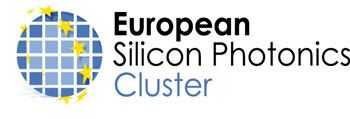 Under the umbrella of the European Silicon Photonics Cluster, 10 European R+D project consortia coordinate their efforts in silicon photonics.
Under the umbrella of the European Silicon Photonics Cluster, 10 European R+D project consortia coordinate their efforts in silicon photonics.
Aug 19th, 2010
Read more
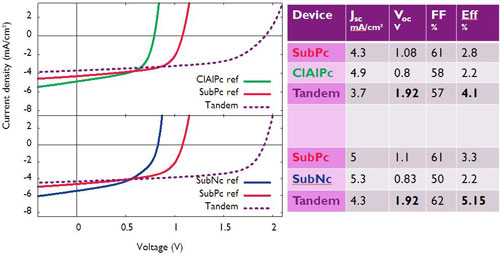 Imec has fabricated tandem organic solar cells with peak conversion efficiencies of 5.15%. This was achieved by stacking two different planar heterojunction devices, each with a high open-circuit voltage.
Imec has fabricated tandem organic solar cells with peak conversion efficiencies of 5.15%. This was achieved by stacking two different planar heterojunction devices, each with a high open-circuit voltage.
Aug 19th, 2010
Read more
Last call for papers for the 2010 Monte Verita' Workshop: Frontiers in Neuroengineering, that will take place in Ascona, Switzerland, September 5-9th, 2010.
Aug 18th, 2010
Read more
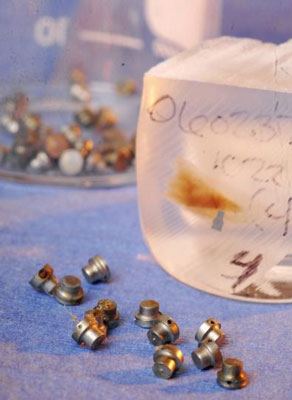 Researchers have developed an improved coating technique that could strengthen the connection between titanium joint-replacement implants and a patients' own bone.
Researchers have developed an improved coating technique that could strengthen the connection between titanium joint-replacement implants and a patients' own bone.
Aug 18th, 2010
Read more
 For their look into the nanoworld, researchers used a scanning tunneling microscope. Its thin metal tip scans the specimen surface like the needle of a record player and registers the atomic irregularies and differences of approximately one nanometer with minuscule electric currents.
For their look into the nanoworld, researchers used a scanning tunneling microscope. Its thin metal tip scans the specimen surface like the needle of a record player and registers the atomic irregularies and differences of approximately one nanometer with minuscule electric currents.




 Subscribe to our Nanotechnology News feed
Subscribe to our Nanotechnology News feed